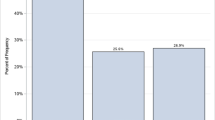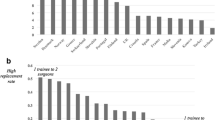Abstract
Malawi has a population of about 13 million people, 85% of whom live in rural areas. The gross national income per capita is US$620, with 42% of the people living on less than US$1 per day. The government per capita expenditure on health is US$5. Malawi has 266 doctors, of whom only nine are orthopaedic surgeons. To address the severe shortage of doctors, Malawi relies heavily on paramedical officers to provide the bulk of healthcare. Specialized orthopaedic clinical officers have been trained since 1985 and are deployed primarily in rural district hospitals to manage 80% to 90% of the orthopaedic workload in Malawi. They are trained in conservative management of most common traumatic and nontraumatic musculoskeletal conditions. Since the program began, 117 orthopaedic clinical officers have been trained, of whom 82 are in clinical practice. In 2002, Malawi began a local orthopaedic postgraduate program with an intake of one to two candidates per year. However, orthopaedic clinical officers will continue to be needed for the foreseeable future. Orthopaedic clinical officer training is a cost-effective way of providing trained healthcare workers to meet the orthopaedic needs of a country with very few doctors and even fewer orthopaedic surgeons.



Similar content being viewed by others
References
Malawi Orthopaedic Project Report. 1985–1995. Blantyre, Malawi: Blantyre Print and Packaging; 1995.
National Statistical Office (NSO) [Malawi], and ORC Macro. Malawi Demographic and Health Survey 2004. Calverton, Maryland: NSO and ORC Macro; 2005.
Registered Health Professionals and Licensed Clinics. Medical Practitioners and Dentist Act. Zomba, Malawi: Government Printers; 2007.
WHO Country Health System Fact Sheet 2006 – Malawi. World Health Organization Web site. Available at: http://www.who.int/countries/mwi/en. Accessed December 2007.
Acknowledgments
The Malawi orthopaedic clinical officer training program was the vision of Dr. Edward Blair who sadly passed away in 2007. His devoted effort and commitment for over a decade in a foreign land away from family and friends is commendable. Funding form CIDA and Rotary International was crucial in the first 10 years.
Another dedicated individual was Prof. Chris Lavy who resurrected the program in 1998 having seen the importance of the program. Funding from DFID and Nuffield Foundation through THET was important in restarting the program. He also spent a decade in Malawi from 1996 to 2006.
All other stakeholders including Malawi Ministry of Health, Malawi College of Health Sciences, Queen Elizabeth Central Hospital, University of Malawi College of Medicine, and Beit Cure Hospital are thanked for supporting the program.
We thank the teaching faculty, especially Mr. Christopher Ngulube, for the wonderful job training generations of orthopaedic clinical officers in Malawi.
Author information
Authors and Affiliations
Corresponding author
Additional information
Each author certifies that he or she has no commercial associations (eg, consultancies, stock ownership, equity interest, patent/licensing arrangements, etc) that might pose a conflict of interest in connection with the submitted article.
About this article
Cite this article
Mkandawire, N., Ngulube, C. & Lavy, C. Orthopaedic Clinical Officer Program in Malawi: A Model for Providing Orthopaedic Care. Clin Orthop Relat Res 466, 2385–2391 (2008). https://doi.org/10.1007/s11999-008-0366-5
Received:
Accepted:
Published:
Issue Date:
DOI: https://doi.org/10.1007/s11999-008-0366-5




